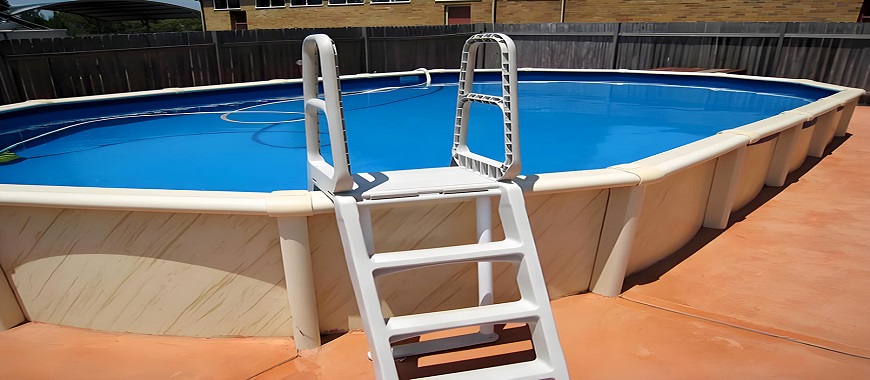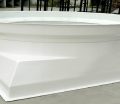
Fiberglass tubs are popular for their durability and affordability, making them a common choice in many households. These tubs are lightweight yet strong, offering a long-lasting alternative to materials like metal or ceramic. However, over time, stress and frequent use can cause small hairline cracks in fiberglass tubs. These cracks often appear as a result of heavy weight or pressure on unsupported areas, as well as daily wear and tear. Addressing a small hairline crack in fiberglass tub early is crucial to prevent it from worsening. By repairing minor cracks promptly, you can help maintain the appearance and structural integrity of your tub, avoiding costlier repairs or potential replacements in the future.
Why Small Hairline Cracks in Fiberglass Tubs
Understanding the causes behind a small hairline crack in fiberglass tub is essential for effective repair and prevention. Fiberglass tubs are durable but can be vulnerable to stress and improper usage over time. Identifying the factors that lead to these cracks can help extend the life of your tub.
Stress Cracks in Fiberglass Tub
A small hairline crack in fiberglass tub often forms due to stress placed on certain areas. Stress cracks occur when weight or pressure is focused on unsupported areas of the tub, leading to gradual weakening and cracking. Common stress-related factors include:
- Improper Installation: If the tub isn’t installed correctly, it may lack proper support, causing the fiberglass to crack under regular use.
- Excessive Weight: Over time, heavy objects or frequent pressure in one area can create stress points in the fiberglass.
- Thermal Expansion and Contraction: Temperature changes can cause fiberglass to expand and contract, leading to cracks.
Stress cracks are typically unavoidable when the tub’s foundation lacks proper support. Without repair, even a small hairline crack in fiberglass tub can worsen, compromising the tub’s structure.
Usage and Maintenance Factors
Another common reason for a small hairline crack in fiberglass tub is excessive use and lack of maintenance. Heavy daily use can wear down the fiberglass surface, while neglecting maintenance accelerates the damage. Contributing factors include:
- Frequent Water Exposure: Prolonged contact with water without proper drying can erode the fiberglass surface, making it more susceptible to cracks.
- Chemical Damage: Strong cleaners or abrasive products can weaken the fiberglass, increasing the likelihood of a small hairline crack in fiberglass tub.
- Regular Wear and Tear: Everyday use, especially in households with high water demand, can slowly damage the tub’s surface.
A combination of these factors may cause small cracks to appear over time. By addressing the causes and reinforcing the surface, you can help prevent additional damage and extend the tub’s durability. Proper care and regular inspection can reduce the risk of a small hairline crack in fiberglass tub.
Spider Cracks in Fiberglass Tub: Causes and Solutions
DIY Guide: How to Fix a Small Hairline Crack in Fiberglass Tub
Repairing a small hairline crack in fiberglass tub can prevent more significant damage and prolong the tub’s life. This guide outlines each step in detail, using basic tools and materials for effective repairs.
Step 1: Clean the Affected Area
Before repairing a small hairline crack in fiberglass tub, the area must be thoroughly cleaned. This ensures that dirt and mold don’t interfere with the bonding process.
- Use a household cleaner to eliminate stains, dirt, and any mold around the crack.
- Rinse the area well with water to remove any cleaner residue.
- Dry the cleaned area using a lint-free cloth, preparing a clear surface for repairs.
Step 2: Sand the Area
To ensure a strong bond, sanding the area around the small hairline crack in fiberglass tub is crucial. Sanding helps smooth the surface and enhances adhesion.
- Lightly sand the area with fine-grit emery cloth to remove rough edges around the crack.
- Use a clean, lint-free rag to wipe away dust, creating a smooth and ready surface.
Step 3: Apply Bonding Agent
Applying a bonding agent helps the repair materials adhere securely to the tub surface, sealing the small hairline crack in fiberglass tub effectively.
- Use a small paintbrush or applicator to spread the bonding agent evenly across the crack.
- Follow the instructions on the kit for precise application and drying times.
Step 4: Fill the Crack
A small hairline crack in fiberglass tub requires filler to seal and restore the area’s structural integrity.
- With a putty knife, apply fiberglass filler carefully, filling the crack entirely.
- Smooth the filler to remove excess and allow it to dry completely before proceeding.
Step 5: Sand the Repaired Surface
After the filler dries, sanding again helps create a flush surface, ensuring that the small hairline crack in fiberglass tub repair is seamless.
- Lightly sand the dried filler using fine-grit emery cloth to level the repair with the tub surface.
- Wipe away any dust or particles with a clean, lint-free rag.
Step 6: Apply Epoxy Coating
An epoxy coating provides an additional layer of protection, strengthening the repair area and sealing the small hairline crack in fiberglass tub.
- Mix the epoxy gel according to the package instructions for optimal consistency.
- Apply a thin, even layer over the crack with a paintbrush, covering the repaired surface.
Step 7: Reinforce with Fiberglass Cloth
Reinforcing the small hairline crack in fiberglass tub with fiberglass cloth increases durability and prevents future cracks.
- Cut the fiberglass cloth to fit over the repair area.
- Press the cloth firmly onto the wet epoxy, smoothing out air bubbles with a putty knife.
Step 8: Apply Additional Epoxy Layer
A final epoxy layer over the fiberglass cloth ensures a solid and reliable repair for the small hairline crack in fiberglass tub.
- Spread an additional coat of epoxy mixture over the cloth to bond it securely to the tub surface.
Step 9: Finish with Sealer
Applying a sealing coat as the final step protects the repair and prevents moisture from re-entering the small hairline crack in fiberglass tub.
- Use a paintbrush to apply the sealer from the kit, following the instructions for optimal protection.
By following these steps, you can restore a small hairline crack in fiberglass tub effectively, improving its longevity and appearance. Regular inspections and timely repairs will help keep your tub in optimal condition for years.
Copper Stain on Fiberglass Tub? Cleaning Solutions Here
Additional Tips for Fixing Hairline Crack in Fiberglass Shower Floor
At GangLong Fiberglass, we understand the importance of proper repair for a small hairline crack in fiberglass tub or shower floor. Addressing hairline cracks in fiberglass tub or shower areas promptly ensures the longevity and durability of your bathroom fixtures. Below, I’ll share additional tips for effectively fixing hairline cracks in fiberglass shower floors.
Use the Same Repair Process for Shower Floor Cracks
The repair steps for a small hairline crack in fiberglass tub also apply to shower floors. Both surfaces experience similar wear, so the process we recommend for tubs works well on fiberglass shower floors. Following these steps can:
- Restore the shower floor’s appearance by filling and sealing any small hairline cracks in fiberglass tub or shower surfaces.
- Prevent further damage by reinforcing weak areas in the fiberglass.
When working on a shower floor, ensure you have sufficient ventilation, as the enclosed space can trap fumes from bonding agents or epoxies.
Importance of Waterproofing
In our experience at GangLong Fiberglass, waterproofing plays a crucial role in repairing a small hairline crack in fiberglass tub or shower floor. Shower floors face constant water exposure, so sealing the repair properly is essential. Benefits of waterproofing include:
- Extended Lifespan: A waterproofed repair keeps water from penetrating, protecting the shower floor against further cracks.
- Improved Safety: By sealing the crack, you reduce the risk of mold or mildew growth, which can compromise health and safety.
A good sealer, applied as the final step, helps the repair blend with the surrounding surface and ensures complete waterproofing.
Use a Quality Fiberglass Tub Repair Kit
Selecting a quality fiberglass tub repair kit is key for effective results when repairing a small hairline crack in fiberglass tub or shower floor. A reliable repair kit provides durable, waterproof materials that last. Here’s what to look for in a good kit:
- Comprehensive Tools: A high-quality kit should include fillers, bonding agents, epoxy, and a sealing coat.
- Clear Instructions: Detailed steps help achieve a professional repair without needing extensive experience.
- High-Quality Materials: Using premium materials ensures the repair will hold up under frequent water exposure.
At GangLong Fiberglass, we always recommend following each step carefully, whether you’re working on a tub or shower floor. A quality kit, combined with waterproofing, ensures that any small hairline crack in fiberglass tub or shower areas is sealed and protected effectively, preserving the structure and appearance.
Grout Fiberglass Tub: When to Use It Effectively
When to Contact a Professional for Help with a Small Hairline Crack in Fiberglass Tub
While many homeowners can repair a small hairline crack in fiberglass tub themselves, certain cases require professional assistance. Recognizing the signs of deeper structural issues and knowing when to seek expert help can prevent costly damage and ensure a durable repair. Below are some guidelines for identifying when it’s best to involve a professional.
Recognizing Deeper Structural Issues
Sometimes, a small hairline crack in fiberglass tub may indicate more significant underlying problems. These issues can compromise the structural integrity of the entire tub. Signs that the crack is more than surface-level include:
- Expansion Over Time: If the crack continues to grow despite initial repair attempts, there may be an underlying issue causing stress on the fiberglass.
- Repeated Cracking: Frequent reappearance of cracks, even after repair, could point to poor installation or lack of support underneath the tub.
- Tub Sagging or Flexing: When pressure on the tub causes visible sagging or flexing, it may indicate an issue with the tub’s support structure, requiring professional reinforcement.
In these cases, addressing the small hairline crack in fiberglass tub alone will not be enough. Professionals can evaluate the underlying support and recommend more extensive solutions.
Seeking Professional Repair Services for Large or Complex Cracks
A small hairline crack in fiberglass tub can often be fixed using DIY methods, but larger or more complex cracks demand specialized knowledge. Professional repair services offer tools, expertise, and methods to address such issues. Situations that typically call for professional help include:
- Large or Deep Cracks: A large or deep crack requires more intensive filling and bonding, which professionals can handle efficiently.
- Complex Damage Patterns: Cracks extending from multiple points or forming intricate patterns may indicate extensive wear, best assessed by experts.
- Specialized Equipment Needs: Professional repair often uses advanced equipment to ensure a seamless and durable repair, especially in complex cases.
Seeking professional repair services for larger or more complicated cracks in a fiberglass tub can save time and ensure a long-lasting fix. Involving a professional early on also reduces the risk of needing a complete tub replacement in the future.
FAQs about Small Hairline Crack in Fiberglass Tub
Yes, a hairline crack in a fiberglass tub can be repaired. Small cracks typically only need basic tools and materials, like a fiberglass repair kit. This process involves cleaning the area, sanding the crack, applying bonding agents, and filling it with fiberglass filler. After filling, the area is sanded again to level it, followed by applying an epoxy layer and sealing the repair. These steps are usually enough for minor cracks. However, if the crack continues to expand or reappear, this might indicate deeper structural issues. In such cases, contacting a professional repair service is recommended to assess and fix the problem effectively. Proper repairs help prevent further damage, extend the tub’s life, and maintain its appearance.
Hairline cracks in fiberglass tubs often result from normal wear, stress, or even improper installation. If a tub’s structure lacks adequate support, cracks can form over time. Thermal changes, such as frequent hot and cold water use, can also contribute by causing expansion and contraction in the fiberglass material. Heavy items dropped on the tub surface or constant weight in one area can create stress points, leading to cracks. Using abrasive cleaners or chemicals on fiberglass tubs may further weaken the surface, making it more susceptible to cracks. While small hairline cracks are usually just cosmetic, they should be repaired promptly to prevent them from worsening and affecting the tub’s integrity.
Repairing hairline cracks in fiberglass requires cleaning, sanding, and filling the damaged area. First, clean the area to remove dirt and debris that could interfere with adhesion. Next, lightly sand the crack to smooth rough edges and ensure better bonding. A bonding agent is applied, followed by fiberglass filler, which fills and seals the crack. After drying, sand the area again for a level finish. Finally, apply an epoxy coating and a sealer to protect and waterproof the repair. These steps are usually sufficient for small hairline cracks. However, if the damage recurs or worsens, professional assistance may be necessary to ensure a lasting fix.
Stress cracks in fiberglass tubs are caused by factors such as poor installation, excessive weight, or sudden temperature changes. When tubs aren’t installed with adequate support, certain areas bear too much pressure, resulting in stress cracks over time. Heavy use, frequent pressure on one spot, or impacts from dropped items can also weaken fiberglass, causing cracks. Additionally, sudden shifts in temperature cause expansion and contraction, creating stress in the fiberglass material. Exposure to abrasive chemicals or cleaners may further contribute to cracks by weakening the fiberglass structure. Proper installation, avoiding heavy impacts, and using gentle cleaning products can help prevent these stress cracks from developing.

As the editor of GangLong Fiberglass, I have years of experience and in-depth research, focusing on cable tray products, fiberglass solutions, and grille systems. I incorporate years of industry insights and practical experience into every content, committed to promoting the progress of the industry. At GangLong Fiberglass, my commitment is reflected in every product, from innovative cable trays to durable fiberglass solutions and sturdy grille systems. As an authoritative voice in the industry, my goal is to provide valuable information to professionals and businesses and promote forward-looking solutions.


